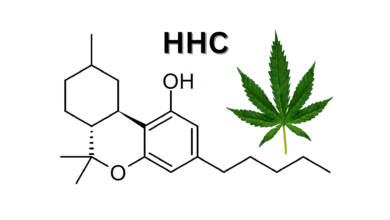Does Alcohol Stay in Your System for Long?

Determining accurate time windows for how long does alcohol stay in your system depends on insights into distinctive metabolism rates, testing detection windows, and alcohol’s impact on physical and mental performance. While individual factors vary in precise timelines, understanding key processing benchmarks and risks surrounding residual alcohol in the body fluids and tissues highlights why mindfulness matters.This guide breaks down contributing variables around how long does alcohol stay in your system – spanning absorption rates to risk elevations, legal considerations, and recommendations supporting health and safety. By distilling need-to-know alcohol longevity facets in the body, individuals can make knowledgeable consumption choices and monitor potential residual effects lingering beyond initial detectability. Alcohol metabolism is a complex process, primarily taking place in the liver, where enzymes break down alcohol into acetaldehyde, a toxic compound before it’s further metabolized into harmless substances. This process is remarkably consistent, with the liver processing approximately one standard drink per hour omgblog. However, this rate can fluctuate based on individual differences in liver function, enzyme levels, and the presence of other nutrients that can affect enzyme activity. BAC is a dynamic measure that reflects the concentration of alcohol in one’s bloodstream. It’s a critical indicator used by law enforcement and medical professionals to assess impairment. The rate at which BAC rises and falls is influenced by the speed of alcohol consumption, the volume of alcohol consumed, and the body’s efficiency in metabolizing alcohol. Factors such as hydration levels and genetic variations in alcohol dehydrogenase, an enzyme involved in metabolizing alcohol, can also play significant roles. The window during which alcohol can be detected in the body depends largely on the type of test administered. Each testing method—breath, blood, urine, or hair—has its own sensitivity and detection timeline. For example, advanced urine testing technologies, such as ethyl glucuronide (EtG) tests, can trace alcohol metabolites up to 80 hours after consumption, offering a longer detection window than standard methods. Individual physiological factors significantly impact how long alcohol stays in your system. These include: Encoded within DNA, genetic compositions directly affect alcohol metabolism rates through differences in enzyme production performing chemical breakdown. For instance, common mutations slowing production rates of alcohol dehydrogenases and aldehyde dehydrogenase cause acetaldehyde accumulation, exacerbating negative effects. Those with accelerated ethanol conversions, however, process each drink faster. The body’s overall well-being majorly influences alcohol metabolism efficiency. Those managing chronic diseases taxing liver functionality and the gastrointestinal tract face impaired breakdown rates as these organs work overtime battling illness using resources normally focused on alcohol’s dismantling. Healthy individuals metabolize drinks quickly. Certain essential and elective drug regimens inadvertently slow alcohol metabolism by competing to break down molecules through shared enzymatic pathways or indirectly burdening the liver. Checking possible medication interactions before drinking remains vital to avoid acetate accumulation and adverse effects. External intake influencers like guzzling drinks back-to-back on empty stomachs versus steady sipping with food substantially impact peak blood alcohol presence and body clearance rates. Hydration levels similarly sway timelines. Understanding personal tolerance provides consumption guidance, keeping systemic alcohol within optimal safety ranges. Beyond its detectability, alcohol’s effects on the body can be wide-ranging and long-lasting. Even after alcohol is no longer present in the bloodstream, its impact on cognitive functions, mood, and physical coordination can persist. Alcohol’s diuretic properties can lead to dehydration, affecting cognitive function and physical performance. Moreover, regular consumption can have long-term health implications, including impacts on liver health, cardiovascular systems, and mental health. Understanding the intricate variables affecting how long does alcohol stay in your system illuminates the importance of mindful consumption and lingering effect monitoring to ensure personal and public safety. While detection times vary situationally, alcohol’s prolonged impacts on mental faculties, physical coordination, and long-term health persist long after it becomes undetectable.Armed with clarity on the multifaceted timeline alcohol lingers within – from absorption to byproduct filtration – individuals can become informed, health-conscious consumers. By fully grasping your body’s distinctive processing pace, testing detection windows, and risk elevation timeframes, you remain fully empowered in evaluating short and long-term alcohol intake suitability for your lifestyle. This knowledge supports balancing enjoyment for today with well-being priorities for years ahead.1. The Metabolism of Alcohol
2. Blood Alcohol Concentration (BAC)
3. Alcohol Detection Times
4. Factors Influencing Alcohol Metabolism
Genetic Makeup
Health Status
Medication Interactions
Consumption Variables
5. The Impact of Alcohol on Your System
Conclusion





